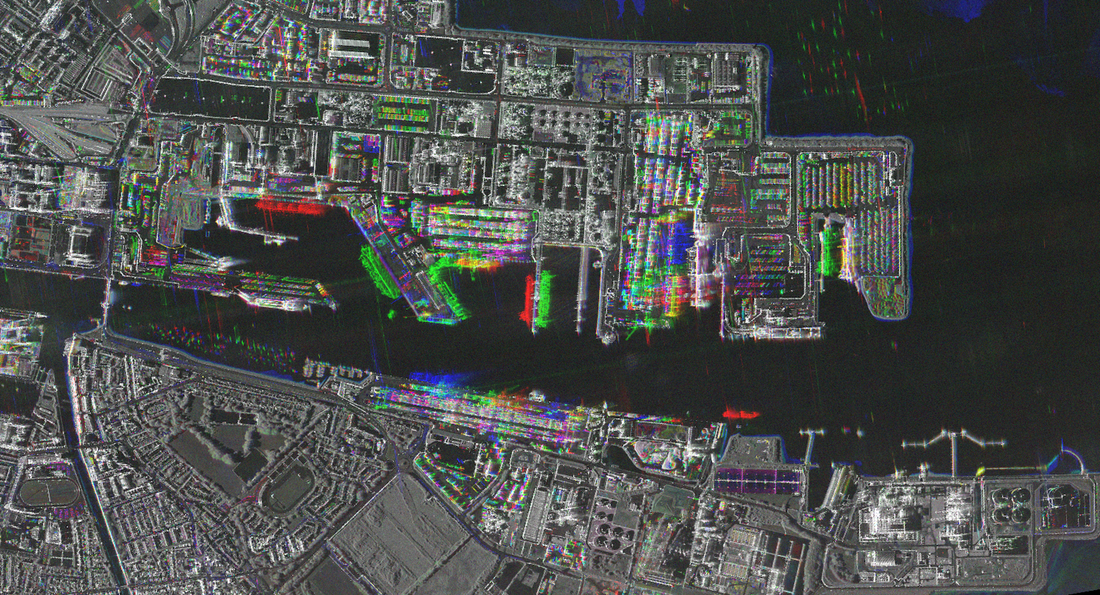Synthetic Aperture Radar (SAR) analysis course - Online
|
Synthetic Aperture Radar (SAR) analysis course - Online
Reference: SAR-ISRA-003Online Language: English Duration: 2 weeks Graduation title: SAR Imagery Analyst Aim: To provide the students in-depth knowledge of “Synthetic Aperture Radar” (SAR) imagery Analysis. Once the student has successfully completed the SAR Course, he/she has a very good basic skill set to start working with SAR imagery datasets. |
Synthetic Aperture Radar (SAR) analysis course
Airborne & space RADAR imaging sensors are capable of collecting imagery of very large areas, day or night, regardless of weather conditions.
While it sounds like the sensor to replace all others, there are a few things to consider.
RADAR imagery is somewhat difficult to interpret correctly. The images do not quite look like what we are used to.
Furthermore, there are some RADAR physics related phenomena that may be observed in SAR imagery.
These phenomena may seem to be a nuisance at first. But if they are interpreted correctly, they may help the analyst with the task at hand.
Course Objective
This course provides students in-depth knowledge of “Synthetic Aperture Radar” (SAR) imagery Analysis. Once the student has successfully completed the SAR Course, he/she has a very good basic skill set to start working with SAR imagery datasets.
Training programme
The training Programme of the SAR course consists of two stages:
Course prerequisites
The SAR course is not necessarily an entry-level imagery analysis course.
We recommend that potential course participants:
For more information
Phone: +31 (0)85 303 10 07
Email: [email protected]
Airborne & space RADAR imaging sensors are capable of collecting imagery of very large areas, day or night, regardless of weather conditions.
While it sounds like the sensor to replace all others, there are a few things to consider.
RADAR imagery is somewhat difficult to interpret correctly. The images do not quite look like what we are used to.
Furthermore, there are some RADAR physics related phenomena that may be observed in SAR imagery.
These phenomena may seem to be a nuisance at first. But if they are interpreted correctly, they may help the analyst with the task at hand.
Course Objective
This course provides students in-depth knowledge of “Synthetic Aperture Radar” (SAR) imagery Analysis. Once the student has successfully completed the SAR Course, he/she has a very good basic skill set to start working with SAR imagery datasets.
Training programme
The training Programme of the SAR course consists of two stages:
- The first stage is a combination of academics and practical work sessions aimed at understanding how a SAR imaging sensor works. Particular SAR imagery phenomena, that are usually the result of circumstances during collection, will be demonstrated and explained. Students will learn how RADAR “scatters” and interacts with various types of targets.
Students will learn that SAR is excellent for “change-detection” purposes. - The second stage focuses on practical SAR analysis sessions. This time, students will implement what they have learned in phase one in order to correctly report on “target category” installations and facilities.
Typically each analysis session is preceded by a short recap lecture of the target category e.g. “category 01, Aerodromes” Course participants will be presented with challenging SAR imagery datasets, acquired in different “collection modes”. Assignments also include “change-detection” reporting using SAR imagery and Electro-Optical imagery.
Course prerequisites
The SAR course is not necessarily an entry-level imagery analysis course.
We recommend that potential course participants:
- have attended a basic imagery analysis course e.g., the ISR Academy BIAC
- have some prior work experience with Electro-Optical and/or infrared aerial or satellite imagery analysis.
For more information
Phone: +31 (0)85 303 10 07
Email: [email protected]


